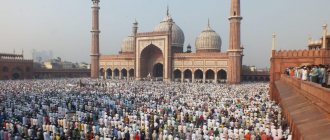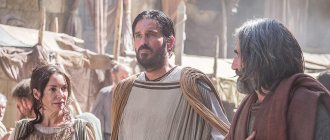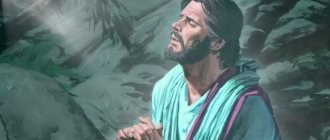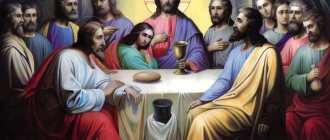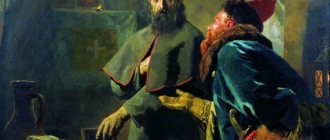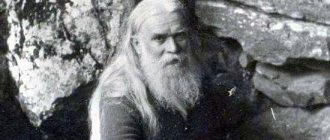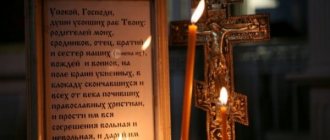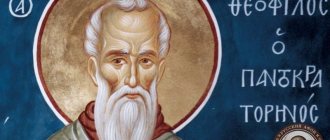| Ap. Philip from 12. Icon 2nd half. X century Sinai Catherine Monastery |
Philip
(+), apostle from 12 November 14 and in the Council of the 12 Apostles
A native of the city of Bethsaida in Galilee, Philip was a deep expert in the Holy Scriptures and, correctly understanding the meaning of the Old Testament prophecies, expected the coming of the Messiah. According to Clement of Alexandria and Eusebius of Caesarea, Philip was married and had daughters. At the call of the Savior (John 1:43), he followed Him. The Apostle Philip is spoken of several times in the Holy Gospel: he led the Apostle Nathanael to Christ (John 1:46); The Lord asked him how much money was needed to buy bread for 5 thousand people (John 6:7); he brought the Greeks who wanted to see Christ (John 12:21-22); finally, during the Last Supper he asked Christ about God the Father (John 14:8).
After the Ascension of the Lord, the Apostle Philip preached the Word of God in Galilee, accompanying his preaching with miracles. So, he resurrected a baby who died in the arms of his mother. From Galilee he went to Greece and preached among the Jews who had resettled there. Some of them reported to Jerusalem about the preaching of the apostle, and then scribes led by the high priest arrived from Jerusalem to Hellas to accuse the Apostle Philip. The Apostle Philip denounced the lie of the high priest, who said that the disciples of Christ stole and hid the body of the Lord, telling how the Pharisees bribed the guards who spread this rumor. When the Jewish high priest and his companions began to blaspheme the Lord and attacked the Apostle Philip, they suddenly became blind. Through the prayer of the apostle, everyone received their sight, and, seeing this miracle, many believed in Christ. The Apostle Philip appointed them a bishop, Saint Narcissus, numbered among the 70 apostles.
From Hellas, the Apostle Philip went to Parth, and then to the city of Azoth (now Ashdod), where he healed the sore eyes of the daughter of a local resident, Nikoclides, who accepted him into his home and then was baptized with the whole family.
| Ruins of the Hierapolis temple-martyrium of the ap. Philippa (now Pamukkale, Türkiye) |
From Azoth, the Apostle Philip went to Hierapolis in Syria, where, incited by the Pharisees, the Jews set fire to the house of Ira, who had received the Apostle Philip, and wanted to kill the Apostle. But, seeing the miracles performed by the apostle: the healing of the withered hand of the city leader Aristarchus, who wanted to strike the apostle, as well as the resurrection of the dead youth, they repented and many accepted holy baptism. Having installed Ira as bishop of Hierapolis, the apostle traveled through Syria, Asia Minor, Lydia, and Mysia, everywhere preaching the Gospel and enduring suffering. He and his sister Mariamne, who accompanied him, were stoned, imprisoned, and expelled from the villages.
| Basilica-tomb over the grave of St. Philip in Hierapolis (Pamukkale) |
Then the apostle arrived in Phrygia, in the city of Phrygian Hierapolis, where there were many pagan temples, including a temple dedicated to snakes, where a huge viper lived. The Apostle Philip, through the power of prayer, killed the viper and healed many who were bitten by snakes. Among those healed was the wife of the ruler of the city, Anfipata, who converted to Christianity. Having learned about this, the ruler Anfipat ordered the capture of Philip, his sister and the Apostle Bartholomew, who came with them. At the instigation of the priests of the temple of the viper, Anphipatus ordered the crucification of the holy apostles Philip and Bartholomew. At this time, an earthquake began, and everyone present at the trial was covered with earth. Hanging on the cross at the temple of the viper, the Apostle Philip prayed for the salvation of those who crucified him from the consequences of the earthquake. Seeing what was happening, the people believed in Christ and began to demand that the apostles be taken down from the cross. The Apostle Bartholomew, taken down from the cross, was still alive and, having received liberation, baptized all those who believed and appointed a bishop for them, but the Apostle Philip, through whose prayers everyone, except Anfipat and the priests, remained alive, died on the cross.
| Relics of the Apostle Philip. Crypt of the Basilica of the Twelve Apostles. Rome. |
Relics and veneration
The Apostle Philip's sister Mariamne buried his body and, together with the Apostle Bartholomew, went to Armenia to preach. In the first half of the century, a majestic martyrium temple was erected on the site of the martyrdom of the apostle. 40 meters from the martyrium, a basilica tomb was erected over the tomb of St. Philip [1]. As of the 2010s, the temple was destroyed, only the square foundation of 20x20 m remained. Martyrium was a place of worship for Orthodox pilgrims, the anniversary of the martyrdom of the Apostle Philip was celebrated with prayer processions [2].
| Part of the chapter of St. Philip the Apostle from the 12th. Monastery of the Holy Cross. Cyprus. Omodos village. |
Around 560, the relics of the holy apostle were transferred to Rome [3], where in the crypt of the Basilica of the Twelve Apostles some of his relics are still found today [4].
The skull of the Apostle Philip was kept in Constantinople, but after the city was captured by the Crusaders in 1204, the shrine was hidden in the village of Arsinoe near the city of Paphos on the island of Cyprus. No later than 1788, the shrine was placed in the nearby Monastery of the Precious and Life-Giving Cross in the village of Omodos.
At the beginning of the 21st century, two parts of the honest head of the Apostle Philip were known. One was kept in the monastery of the Holy Cross in Cyprus in a pyramid-shaped box covered with gold and silver; the authenticity of the relic was confirmed by the seals of the emperors Theodosius the Great and Heraclius I. The other part was in the Meteora Trinity Monastery.
| Part of the chapter of the Apostle Philip (from 12). Meteors. Monastery of the Holy Trinity. |
Life of the Apostle Philip
Apostle Philip was one of the 12 disciples of Jesus Christ. There is no separate story written about him, but the name of the apostle is mentioned in many sources. It is known that the Apostle Philip arrived from Bethsaida and was not familiar with the disciples of Jesus.
In the Gospel the apostle is mentioned during the following events:
- When the miracle of the loaves and fishes occurs;
- When the apostle brings the Greeks to Jesus;
- When he asks the Teacher a question: is it possible to see God the Father.
It is known in history that Philip was the father of 4 daughters and during his life he did many good deeds, preaching not only Christianity, but also caring for the poor, helping widows, orphans, and managing church funds.
They pray to the Apostle Philip to become stronger in faith, especially if there is doubt. This is one of the most believing, strong and wise disciples of Christ, known more for their good deeds than for their preaching. It is believed that the saint helps those who sincerely ask him to cope with experiences and despair.
Prayers
Troparion, tone 3
The universe is adorned,/ Ethiopia rejoices,/ as if she were adorned with a crown,/ having been enlightened by you,/ your memory triumphs brightly,/ God-speaking Philip,/ you taught all to believe in Christ/ and he made the course worthy of the Gospel./ Thus the Ethiopian hand boldly brews to God,/ Pray to Him to grant us great mercy.
Kontakion, tone 8.
Disciple, and Thy friend, and imitator of Thy passion/ The universal God preached Thy sermon, God-speaking Philip;/ By prayers from the most lawless enemies/ Thy Church and every city of Thy/ Keep the Mother of God, Many more kindly
How do prayers to a saint help?
Like many of the apostles, Philip accepted death for Christ. People pray to him when there is a depletion of faith, despondency, or a feeling as if everyone has turned away from you. The apostle gives grace to the most desperate and helps them survive difficult moments. In addition, the apostle helps hopelessly sick people who do not have the opportunity to repent to sincerely repent and appear clean before God. It is to him that prayers are read in difficult moments, including in war, during attack, captivity, and in difficult life situations.
Prayers to the Holy Apostle Philip help to survive difficult moments, stop despairing and losing faith. The fact is that despondency is considered one of the grave sins, since by relying too much only on oneself, a person turns out to be powerless in the face of difficulties. After all, relying only on one’s own strengths and forgetting about the Almighty, a person loses himself, plunging into the abyss of despair if difficulties are not easy to overcome.
Saint Philip did many good deeds during his life and his prayers mention getting rid of despair, worries and suffering, and granting a Christian a peaceful death if such a turn of events cannot be avoided. The Apostle hears everyone and helps everyone, even if not right away.
Saint icon
Icon painters depicted the apostle as a young, beardless man in the vestments traditional for his time. The latter differs on different icons, as well as the colors. In his left hand the apostle holds the Gospel or simply a scroll.
The earliest surviving image is kept on the Sinai Peninsula, in the monastery of St. Catherine. The icon dates back to approximately the 10th century. A miniature with an apostle crucified upside down has also survived to this day; its authorship is attributed to Vasily II.
In the iconography of Rus', the image appeared much later than abroad. The Novgorod Museum presents the icon “Simeon the Stylite, John the Theologian, Apostle Philip” from the 15th century. Also, the face of the apostle is present in one of the 16 stamps of “Nicholas of Zaraisky”. But art historians have reason to believe that the image of Philip was added later.
Travel to Greece
He wandered for a long time throughout the Eulyinian land. His actions were not only sermons. More than once we had to resurrect people or simply heal them. Soon the news spread throughout Greece and reached the clergy in the city of Jerusalem. Then, angry with the apostle, they came to him, demanding an answer. But at the moment when the disciples of the messiah had to answer, the holy spirit spoke instead of them.
He told everything, starting from the heavy stones at the tomb and great deeds. After his words, even the priests themselves did not have a single question left! But the chief bishop did not want to accept the truth. He attacked Philip and wanted to strangle him. At that very moment he became completely black and completely lost his sight.
Image of the Apostle during his journey to Greece
Day of Remembrance
At the very end of autumn, on November 27, the Orthodox world glorifies the Apostle Philip. On this day, the Divine Liturgy is celebrated in every church.
Interesting fact
November 27 is the last day before the Nativity Fast, which is therefore called Filippov.
Church in Veliky Novgorod
Among the magnificent churches of the Novgorod land, the one that proudly stands at the intersection of Nikolskaya and Znamenskaya streets takes pride of place. In the 12th century, when fires turned houses to ashes one after another, residents prayed fervently, and they were granted deliverance from the terrible scourge. In memory of this, they erected a wooden church and consecrated it in the name of two ascetics - St. Nicholas the Pleasant and the Apostle Philip.
Of course, the wooden temple has not survived to this day, and what it looked like is not known for certain. But in 1978, Soviet architects restored the church according to 16th-century drawings - this time from stone.
Since then, every day by 7.30 am (and on Sundays by 6.30) parishioners rush to the Divine Liturgy, and in the evening the bells call everyone to Vespers. And the temple doors remain open until 20.00.
The Novgorod parish of the Apostle Philip is famous throughout Russia for its ancient and miraculous icons. Thus, sick people from all over the country come to pray to the Great Martyr Panteleimon, whose image was painted by the monks of the Athos monastery even before the revolution, and to venerate a piece of his relics. In a temple consecrated in the name of the great healer, it seems quite natural to seek relief from ailments. Church in Moscow.
Church of the Apostle Philip on Arbat
There is always a lot of confusion with the Temple of the Apostle Philip on Arbat:
- it is often mistakenly called the Church of St. Metropolitan Philip;
- they say that it was Metropolitan Philip who was its founder;
- It is believed that the temple burned down during the Napoleonic Wars, and in its place a completely different one was rebuilt.
There is some truth in each of these misconceptions. We should start with who that same Metropolitan Philip was. The life of the ruler fell during the reign of Ivan the Terrible. But the metropolitan’s political views did not coincide with the tsar’s policies - Philip opposed the oprichnina. They tried to fight him, but the ruler was adamant. And finally, under flimsy pretexts, the Metropolitan was exiled, as often happened, to a monastery. He did not live there long, as he was soon strangled.
What relation did the metropolitan have to the church? Quite indirect, actually. He didn't found it. The wooden church was built on the site of Philip's country house when the deceased metropolitan was canonized. Who exactly built it - nothing is known about this.
The temple was indeed almost completely destroyed by the fire of 1812. Part of the bell tower has survived. However, three years later it was restored by steward I. Kosmin. But already in 1819 the main altar was consecrated in honor of the Resurrection of the Word. And this is exactly what the temple is called today. However, this is still the same temple of St. Philip the Apostle, and it is located in the Philippov Lane of the same name. The latter, by the way, has also changed many names in recent years.
Temple in Sharjah
In the United Arab Emirates there is a temple of the Apostle Philip, belonging to the Russian Orthodox Church. It was built not so long ago; the first service was held there on Christmas Day in 2011.
In the magnificent temple complex, built according to the design of the architect Yu.V. Kirsa also includes a cultural and educational center.
***
The Apostle Philip did not leave the Gospel behind. But this does not in any way detract from his role in the spread of Christianity. He managed to convert many to the true faith - and still does, when people who have lost their way ask him for help and guidance. He performed many miracles - and to this day shows them to the sick, mourning and weak.
Zubkova Arina
Why does Orthodoxy honor Philip?
This apostle always had the audacity to ask questions of his teacher that others avoided. But thanks to him, humanity has the answers it needs. So after an event called the “Last Supper,” he asked Jesus a serious question.
Can he show the creator to them, mere mortals? Christ did not like the answer so much that he reproached Philip for his insolence. And his words were as follows: whoever was able to see the son of God saw the creator! He dwells in each of us, especially at moments of great deeds.
Man himself is precisely what is called God's creation. Therefore, to doubt the Lord means to doubt oneself.
After these words, not a single holy apostle who was at the Last Supper had a single doubt about who they saw before them. They took every word of his on faith and tried to put it in their heads forever.

